I know how frustrating it feels when a few drops of paint land on your favorite shirt or jeans in the middle of a project.
The good news is you don’t have to throw those clothes away. If you’ve been wondering how to get latex paint out of clothes, you’re in the right place.
In this guide, I’ll share simple steps for removing fresh stains, effective techniques for tackling dried paint, and fabric-specific tips so you can rescue more pieces from being ruined.
How to Remove Latex Paint from Clothes Depending on the Stain
Getting latex paint out of clothes depends on whether it’s wet or dry. Wet stains are easier to remove; simply scrape off the excess, rinse with warm water, and work in dish soap or laundry detergent.
Dried stains need more effort. You’ll usually need to soften the paint first, then break it down with rubbing alcohol, vinegar solutions, or other safe solvents before scrubbing it out.
These steps also apply if you’ve been searching for how to get paint off clothes of different types.
Think of it as a quick decision flow: if the paint is wet, treat it with soap and water right away. If it’s dry, start by softening and then apply a solvent.
How to Get Latex Paint Out of Clothes While Wet
Catching a latex paint stain while it’s still wet gives you the best chance of saving your clothes. The steps are simple, but acting fast makes all the difference:
Step 1: Scrape Away Excess Paint
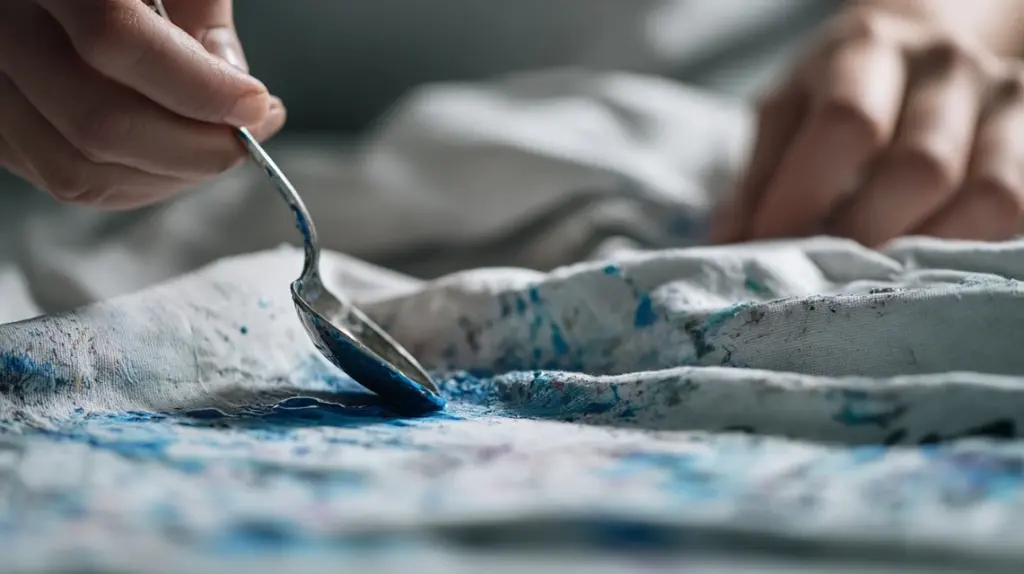
Use a dull knife, spoon, or the edge of a credit card to carefully lift away any wet paint that is sitting on top of the fabric. Work gently to avoid pressing the paint deeper into the fibers.
Scraping right away removes a large portion of the mess, making the later cleaning steps more effective. Always blot, never rub, to prevent spreading.
Step 2: Flush With Warm Water
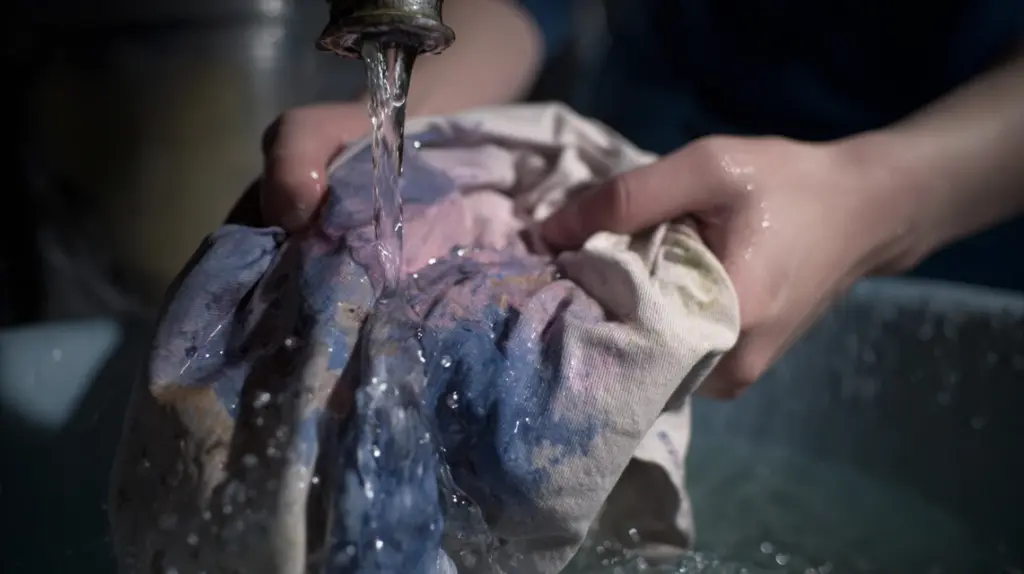
Turn the clothing inside out so the water pushes the paint outward instead of forcing it deeper. Rinse the stained area under a steady stream of warm water, letting it flow from the back side of the fabric.
This helps push the paint particles out through the fibers. Continue flushing until you see the water running clearer before moving to the next step.
Step 3: Apply Dish Soap or Laundry Detergent
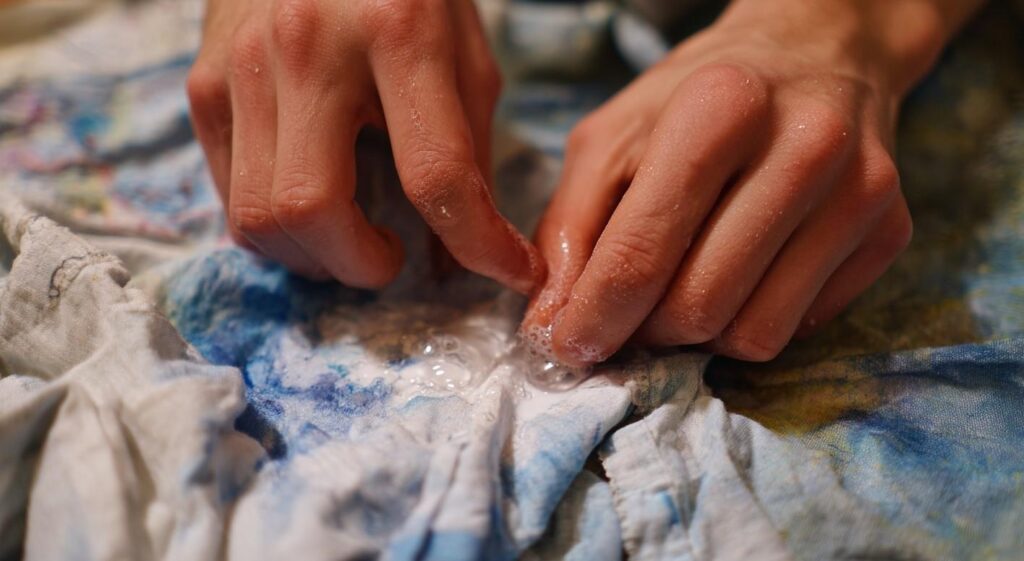
Apply a few drops of liquid dish soap or laundry detergent directly onto the stain. Using your fingers, a sponge, or a soft cloth, gently work the soap into the paint.
The goal is to break down the paint’s water-based formula while lifting it away from the fibers. Let the soap sit for several minutes before rinsing, as this gives it time to loosen the stain.
Step 4: Rinse and Repeat
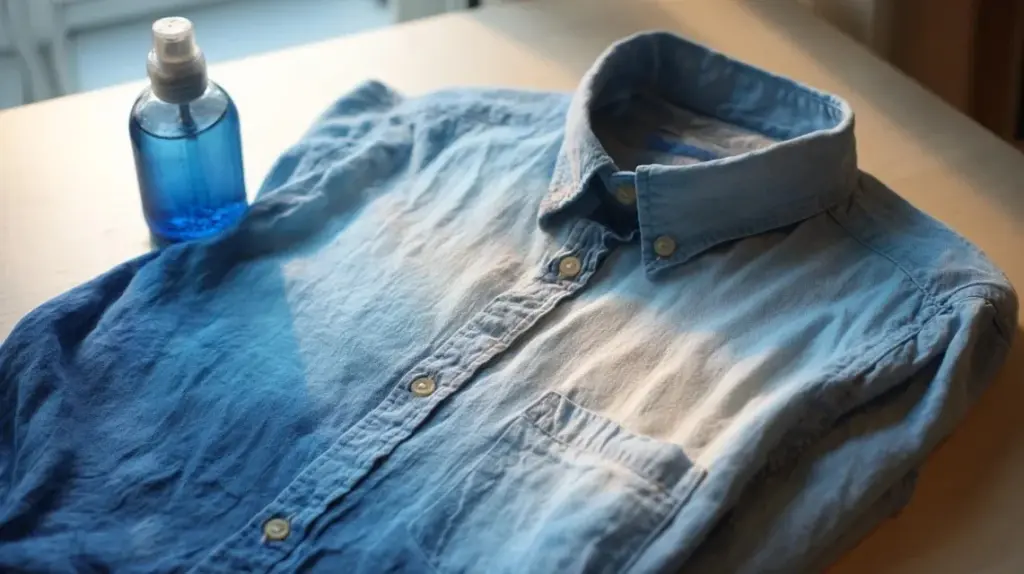
Rinse the fabric thoroughly under warm water again, checking to see if the paint has lifted. If traces remain, reapply soap and repeat the process until the stain fades.
Multiple cycles are often needed for larger or darker paint spots. Be patient and persistent. Once the stain appears gone, wash the garment as usual, but avoid the dryer until you’re sure no paint remains.
How to Get Latex Paint Out of Clothes After It Dries?
Once latex paint dries, it sticks firmly to fabric, making it tougher to remove. Don’t worry, you can still clean it with the right steps and a little patience.
Gather Your Materials
- Rubbing alcohol
- Sponge
- Clean cloth
- Optional gloves
- Small bowl for application
Step 1: Saturate the Sponge
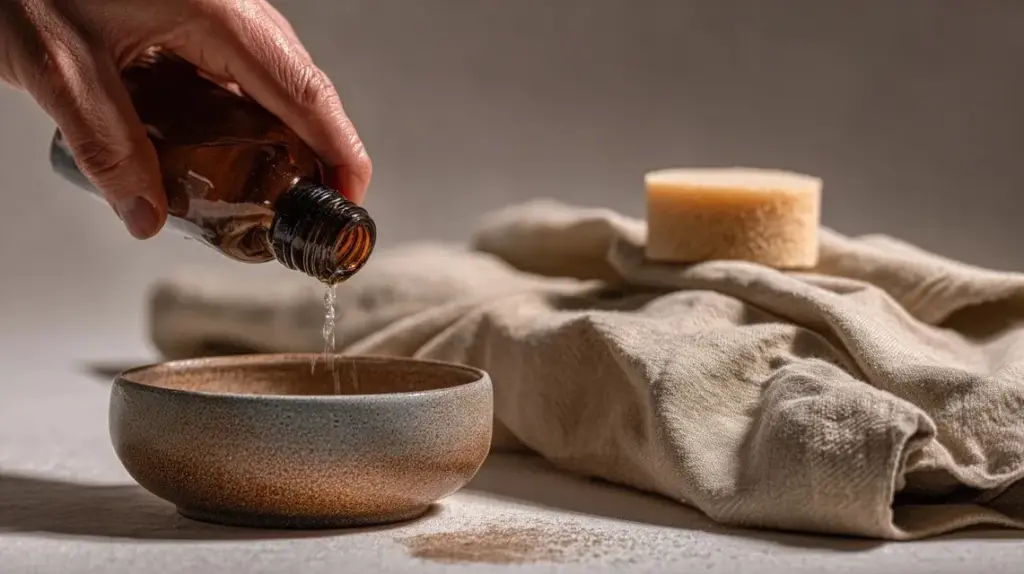
Soak the sponge with rubbing alcohol until damp, ensuring it is well-saturated but not dripping excessively.
Pour rubbing alcohol directly onto your sponge or dip it into a small bowl filled with the liquid. The sponge should hold enough alcohol to stay wet for several seconds when pressed against the stain.
Avoid over-soaking, which may cause a mess or waste. A properly damp sponge gives the best balance between saturation and control during application.
Step 2: Apply to the Paint Spot
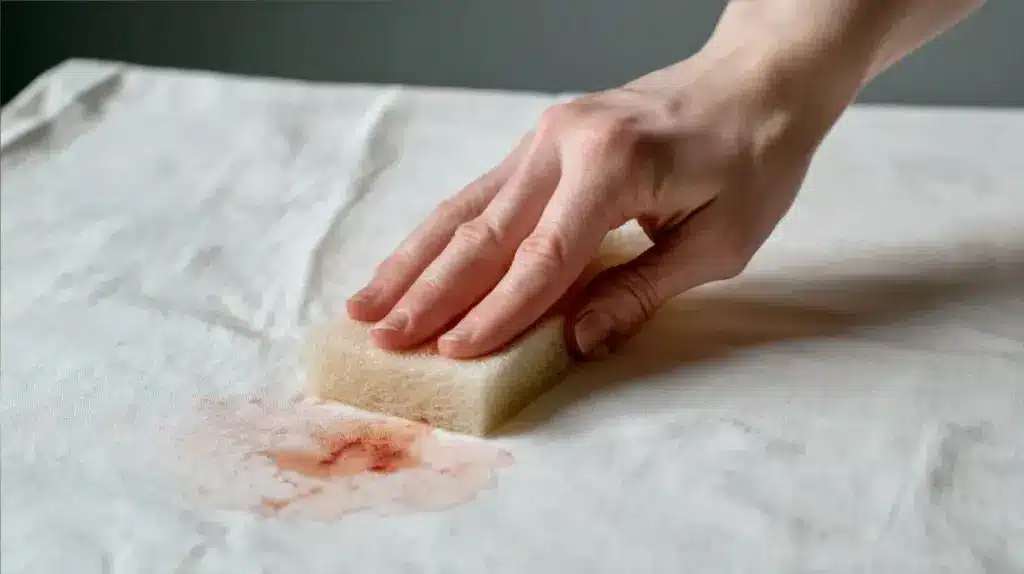
Hold the saturated sponge firmly against the latex paint stain for several seconds, letting the alcohol penetrate.
Place the sponge directly over the paint mark and allow the alcohol to soak in. This short pause helps the liquid reach deeper into the dried paint, softening it from the inside out.
Keeping steady pressure ensures maximum absorption and makes the removal process more effective. A little patience at this step saves effort when you begin scrubbing.
Step 3: Let the Alcohol Work
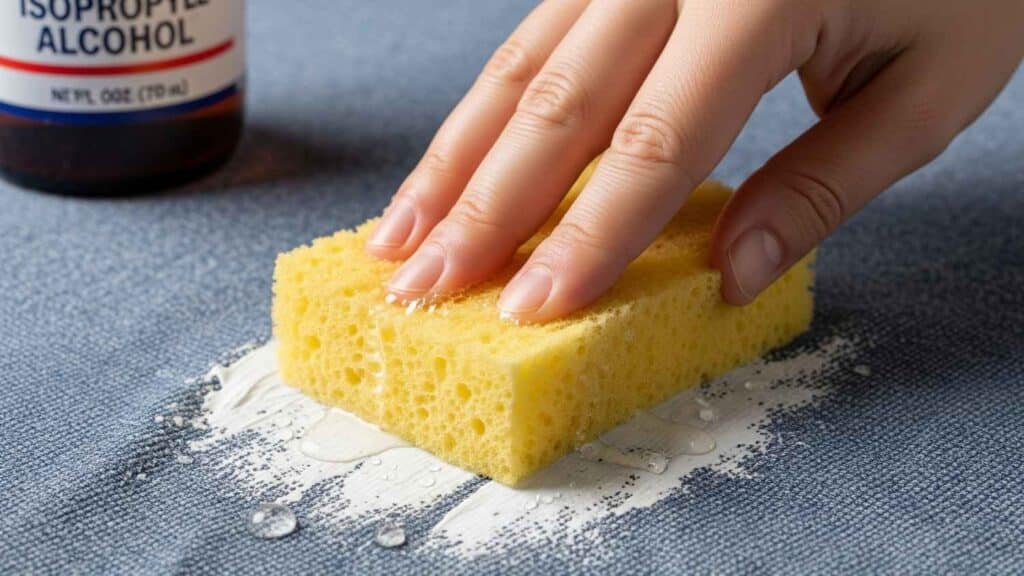
Allow the rubbing alcohol to dissolve the latex paint, softening the stain for easier cleaning and removal.
After pressing the sponge, leave the alcohol to react with the paint for a brief moment. This step breaks down the chemical structure of the latex, loosening its grip on the fabric or surface.
The softened paint becomes easier to wipe or scrub without excessive force. Waiting a short time now prevents unnecessary damage to the material later.
Step 4: Wipe or Scrub Gently
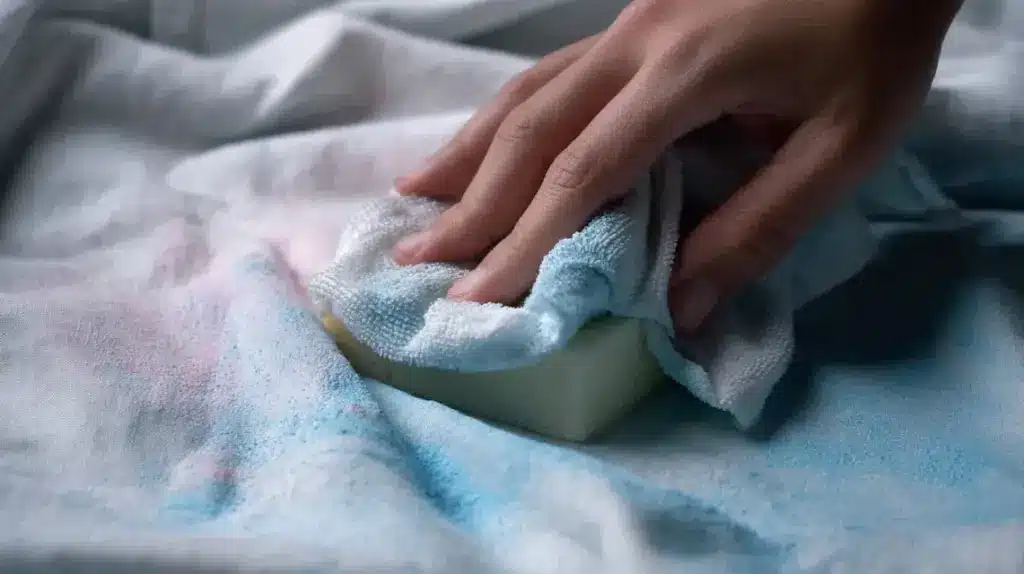
Rub the sponge over the softened paint until it starts lifting, using gentle but firm pressure for best results.
Once the alcohol has done its work, begin wiping or lightly scrubbing the area with the sponge. The paint should begin to “melt” away, breaking apart as you work across the surface.
Use controlled, steady movements rather than aggressive scrubbing to protect the material underneath. If needed, use a cloth to blot away loosened paint as it lifts.
Step 5: Repeat if Needed
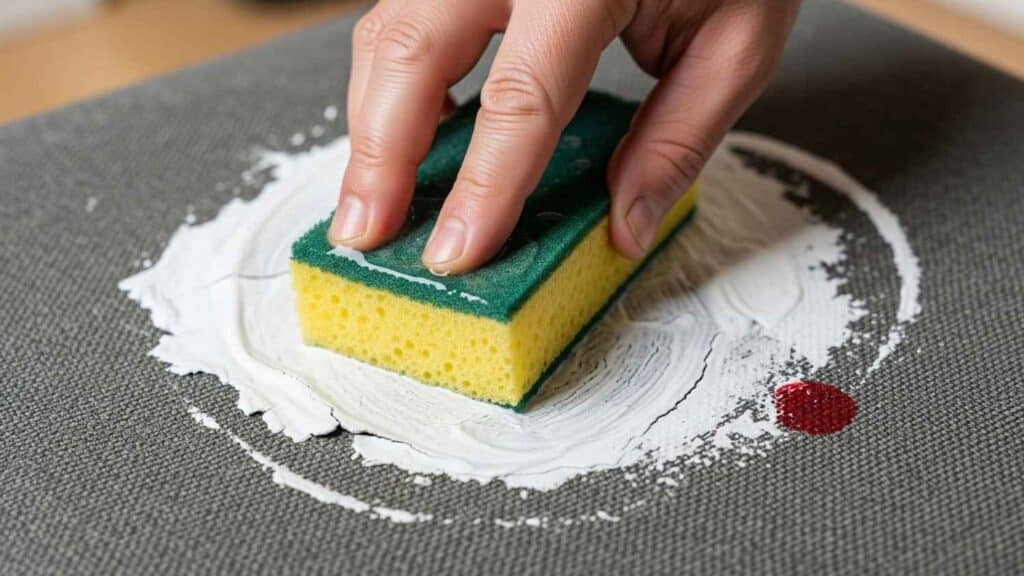
Reapply rubbing alcohol and scrub again if paint remains, continuing until the stain is completely gone.
Some paint spots may require more than one treatment, especially if the layer is thick or deeply dried. Simply re-soak your sponge with rubbing alcohol, press it against the stubborn area again, and repeat the wiping process.
Each round will loosen more paint. Stay patient and keep working in cycles until the surface or fabric is clear of stains.
Comparison of Paint Types and Fabrics
Different paints react differently on fabrics, and choosing the right method depends on both the paint type and the fabric. Many people search for how to get paint off clothes, but the right method depends on both the paint and the fabric type. Here’s a comparison for you to understand it better:
| Paint Type | Cotton & Denim | Polyester & Blends | Delicate Fabrics (Silk, Wool, Acetate) |
|---|---|---|---|
| Latex Paint | Easy removal with warm water, soap, or rubbing alcohol | Works with water/alcohol, but avoid harsh scrubbing | Gentle dabbing with diluted alcohol or mild detergent |
| Acrylic Paint | Needs alcohol or acetone, scrub carefully | Requires stronger solvents, risk of damage | Very difficult to treat; professional cleaning is best |
| Oil-Based | Remove with turpentine or mineral spirits | Solvent use may weaken fibers; test before applying | Avoid strong chemicals; dry-cleaning is safest |
Fabric-Specific Tips
Not all fabrics react the same way to paint removal methods. Knowing how to treat each type of fabric like this will help you avoid damage and get the best results:
Cotton & Denim
Cotton and denim are durable, allowing for stronger cleaning methods. You can safely use hot water rinses, firm scrubbing with brushes, and stronger solvents like rubbing alcohol.
Boiling water or steam can also help soften dried latex paint. These fabrics usually handle repeated treatments well, but always launder afterward to fully remove residue and restore softness. Avoid harsh bleaches unless absolutely necessary.
Polyester & Blends
Polyester and blended fabrics are more sensitive to solvents. Avoid acetone or nail polish remover since they may damage or weaken fibers. Instead, use rubbing alcohol, dish soap, or laundry detergent combined with warm water for safe stain removal.
Work gently with a sponge or soft brush, repeating as needed. Always test on a hidden area first, and rinse thoroughly before laundering.
Delicate Fabrics
Delicate fabrics require the most care. Avoid aggressive scrubbing, boiling water, or strong chemicals like acetone, which can cause permanent damage. Instead, dab gently with diluted rubbing alcohol, mild detergent, or vinegar solutions.
Blot rather than rub, and never twist or wring the fabric. If the stain remains stubborn, it’s often safer to take delicate garments to a professional cleaner to avoid further harm.
Common Mistakes to Avoid
Before you start treating paint stains, it helps to know what not to do. Avoiding these mistakes will save your clothes and make the cleaning process much easier:
- Putting the garment in the dryer before the stain is fully gone
- Skipping patch testing before using alcohol or solvents
- Scrubbing delicate fabrics too aggressively causes fiber damage
- Using acetone on acetate or triacetate fabrics, which can melt fibers
- Ignoring repeated rinsing, leaving paint or solvent residue behind
Aftercare for Fabric Restoration
Even after the paint is gone, your fabric may still require a little extra care. Proper aftercare helps restore its look and feel, keeping your clothes fresh and lasting longer.
Restoring Fabric Softness
Paint treatments can leave fabric stiff or rough. To restore softness, add one cup of white vinegar to the rinse cycle or use fabric softener. Vinegar naturally relaxes fibers while removing lingering residue.
For heavily treated fabrics, repeat the rinse cycle twice. This step helps bring back the garment’s comfort and makes it feel closer to its original texture.
Fixing Discoloration
Harsh cleaning methods sometimes lighten or discolor fabric. Treat this by washing with color-safe bleach to restore an even tone. For stubborn discoloration, consider using a fabric dye touch-up kit that matches the original garment shade.
Always follow instructions carefully to avoid further fading. With proper handling, most discoloration can be corrected, allowing the clothing to look wearable again after stain removal.
When to Retire the Garment
Even after careful cleaning, some garments may be beyond saving. If stains remain visible, fabric feels weak, or colors look permanently altered, it might be time to retire the item.
Consider reusing the piece as painting clothes, a craft material, or a cleaning rag. This ensures the fabric still serves a purpose, even if it’s no longer suitable for daily wear.
Preventing Paint Stains in the Future
Taking precautions before painting saves effort later. Simple protective steps like these can keep your clothes safe from stubborn latex paint stains:
- Protective Clothing and Smocks: Always wear old clothes, smocks, or dedicated painting gear. Loose, lightweight layers work best for covering arms and legs fully.
- Fabric Sprays and Pre-Treatment: Apply fabric protection sprays before starting. These create a barrier that makes it easier to wash out paint if it accidentally splashes.
- Safe Cleanup Practices While Painting: Keep damp cloths and water nearby. Wipe spills immediately, and wash brushes or rollers carefully to avoid dripping onto clothing.
Conclusion
By now, you understand how to get latex paint out of clothes without damaging the fabric when you use the right approach.
From acting quickly on fresh stains to breaking down dried paint with rubbing alcohol or other safe solutions, you have methods that actually work.
I also included tips for restoring fabric softness, fixing discoloration, and preventing paint from ruining clothes in the future.
Keep this guide handy for your next project, and be sure to check out other blogs on the website for cleaning tips to save even more clothing!














